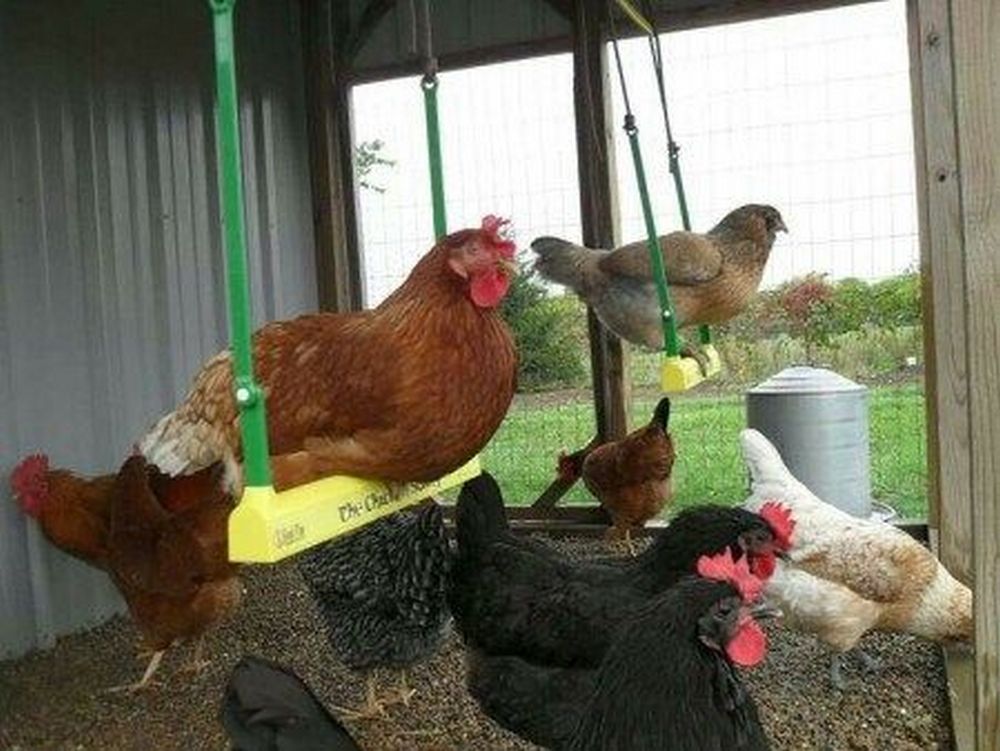
Chickens are great pets – until they get bored. When they do, they start picking on each other. This is because chickens are curious by nature. If they’re not allowed to roam free, there’s a very high chance that they’ll get bored. To avoid this, it’s best that you give them something to keep them busy.

One of the few things to keep them occupied is through play. Why not build a chicken swing and put it inside the chicken coop? It’s an inexpensive project that will surely make your chickens happy.
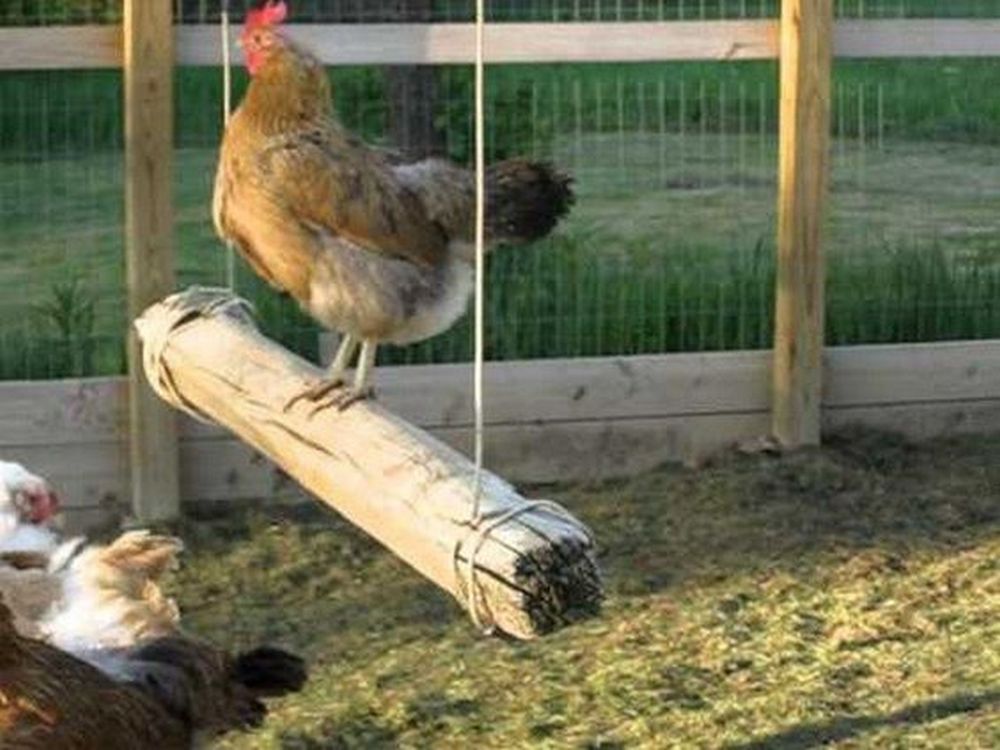
Contents
Crafting a DIY Chicken Swing
Gather the tools and materials that you need and start working on this today. It’s simple and easy to make!
Materials:
- Wood (cut to your desired size)
- Rope (1/2″ in diameter)
Tools:
- Saw
- Drill with drill bits
- Measuring tape
- Scissors
Steps:
Step 1: Measure and Cut the Wood
Start by deciding how wide you want your chicken swing to be. A good length is around 16 to 20 inches to give enough space for one or two chickens. Use your measuring tape to mark the length on your piece of wood. Cut the wood to size using your saw.
Step 2: Drill Holes for the Rope
Once you have your wooden perch cut, measure about 1 to 2 inches from each end of the wood. Mark the spots with a pencil. Drill a hole through each mark. Make sure the holes are large enough for your 1/2-inch rope to pass through easily.
Step 3: Cut the Rope
Decide how high you want to hang the swing. Measure and cut two equal lengths of rope using your scissors. Each piece should be long enough to hang from the swing support and allow the perch to rest at the right height—about 12 to 18 inches off the ground works well for most chickens.
Step 4: Thread the Rope Through the Holes
Take one piece of rope and thread it through one of the holes in the wood. Pull it through by several inches. Tie a secure knot underneath the wooden perch to hold it in place. Repeat this step with the other side and second piece of rope.
Step 5: Hang the Chicken Swing
Find a sturdy support beam in your chicken coop or run. Tie the loose ends of the ropes securely around the beam. Make sure both sides are even, so the swing hangs level.
Step 6: Check the Stability and Height
Before letting your chickens try it out, tug gently on the swing to make sure it’s secure. The swing should be low enough for them to hop on easily, but high enough to swing freely without hitting the ground.
Step 7: Introduce Your Chickens to Their New Swing
Place a chicken on the swing or use treats to encourage them. Chickens are curious, and they’ll usually start exploring it on their own after a little time.
Benefits of Adding a Chicken Swing to Your Coop
Chickens are active, curious animals. They need stimulation to stay happy and healthy. When confined to a coop or run without much to do, they can become bored. Boredom often leads to unwanted behaviors like feather pecking, bullying, or listlessness. Adding a chicken swing is a simple way to enrich their environment. It keeps your flock entertained, encourages natural behaviors, and promotes a healthier coop dynamic. Below are the key benefits of adding a chicken swing to your setup.
Promotes Physical Exercise
A chicken swing encourages birds to hop on and balance. The motion of swinging helps them strengthen their leg muscles, improve balance, and develop better coordination. Unlike standing still or walking around the coop, swinging requires active movement. This extra exercise supports muscle tone and joint health, especially in confined spaces where chickens might not roam freely. Active chickens are healthier chickens.
Reduces Boredom and Stress
Chickens are intelligent creatures that thrive on stimulation. If they get bored, they often start pecking at each other or themselves. These stress-related behaviors can escalate, leading to injury or feather loss. A chicken swing provides a fun distraction. It encourages play and keeps them busy. As a result, your flock stays calmer and less likely to engage in harmful pecking.
Encourages Natural Behaviors
In the wild, birds perch, hop, and swing on branches. Domesticated chickens still have these instincts. Adding a swing lets them practice these natural behaviors inside the coop. They enjoy perching on the swing, gently rocking back and forth like they would on a tree branch. Supporting these instincts helps them stay content and reduces behavioral issues.
Provides Mental Stimulation
Mental stimulation is just as important as physical activity. A chicken swing adds an element of challenge and fun. Chickens need to figure out how to balance and stay on while it moves. This keeps their minds sharp and engaged. A mentally stimulated flock is more alert, curious, and easier to manage.
Prevents Bullying and Pecking Order Problems
In any flock, there’s a pecking order. Dominant birds can sometimes become aggressive, while lower-ranking hens might get bullied. Providing multiple enrichment activities like a swing can ease tensions. It gives chickens something to focus on other than each other. A chicken swing can help break up boredom and reduce aggression in the coop.
Easy to Install and Cost-Effective
One of the best things about chicken swings is how simple they are to add to your setup. They’re inexpensive to make with just a few materials like wood and rope. Even if you’re not a DIY enthusiast, there are plenty of affordable options available to buy. Once installed, they require little maintenance beyond occasional safety checks.
Creates a Happier, More Entertained Flock
A happy chicken is a productive chicken. Stimulation and exercise lead to better overall health. Happier chickens often lay better-quality eggs and live longer, healthier lives. A chicken swing is a small investment that pays off in the well-being of your flock.
Adding a swing to your chicken coop is an easy way to promote physical health, mental stimulation, and harmony among your birds. It’s a simple addition that brings joy to your chickens and peace of mind to you.
Chicken Swing Gallery
Click on any image to start the lightbox display. Use your Esc key to close the lightbox.
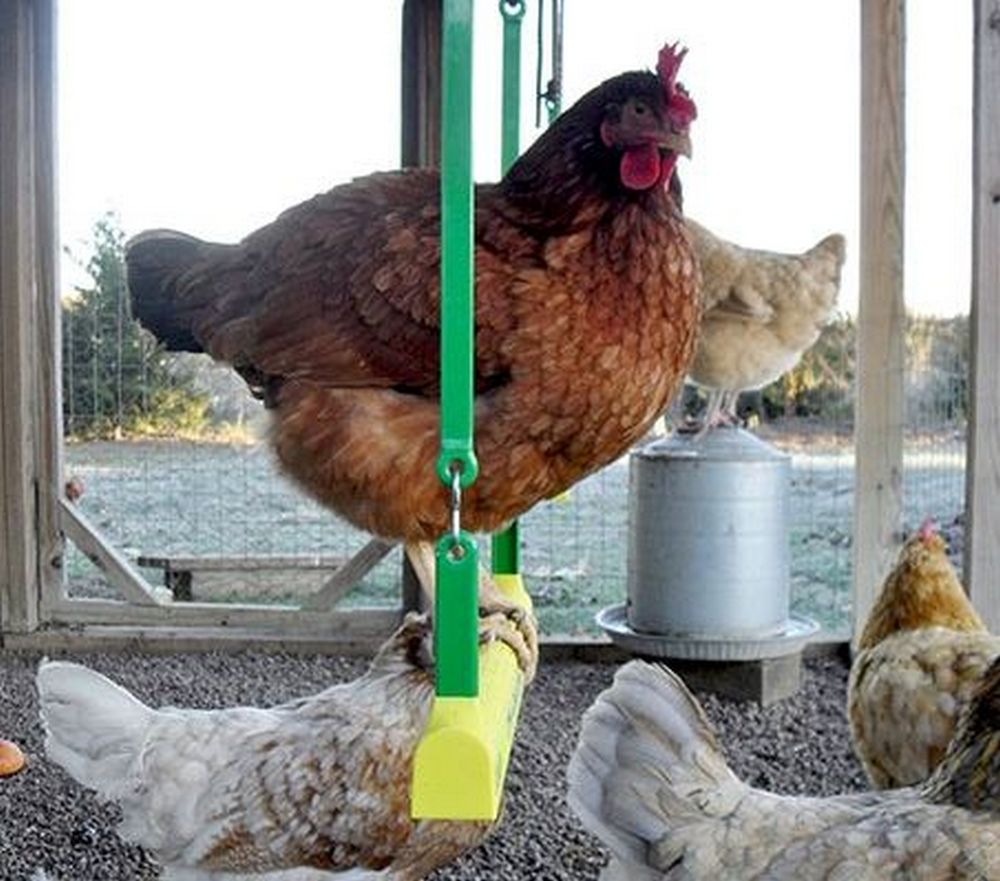
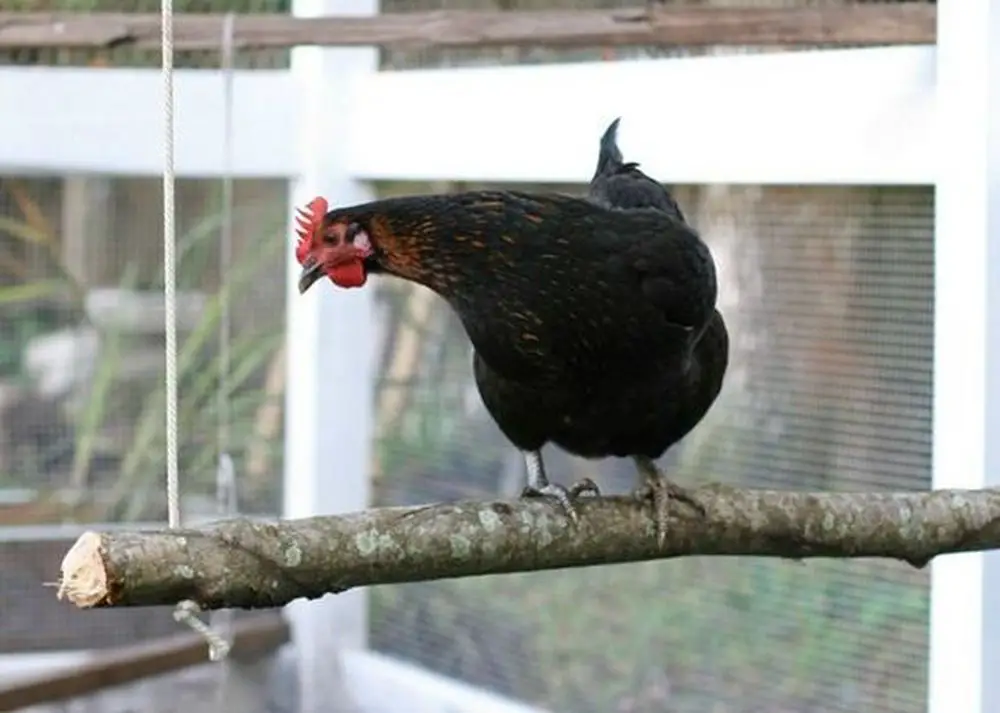



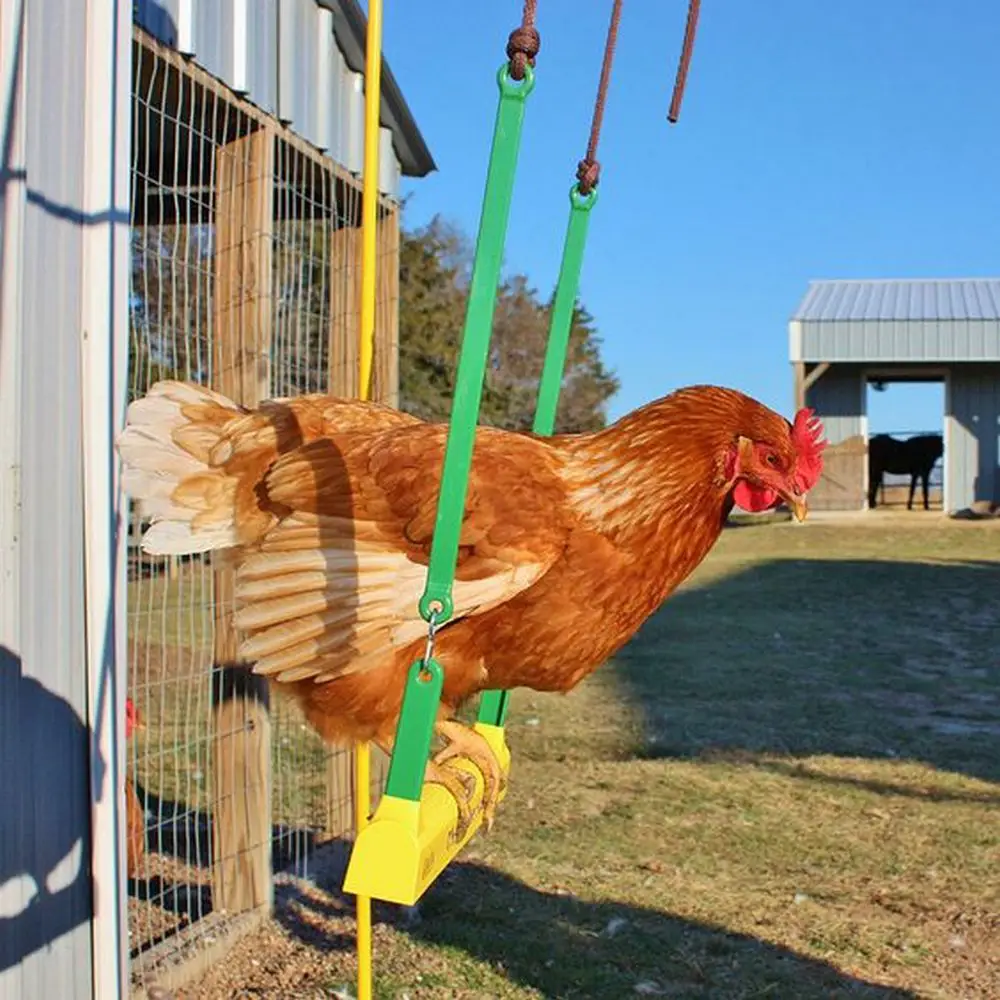

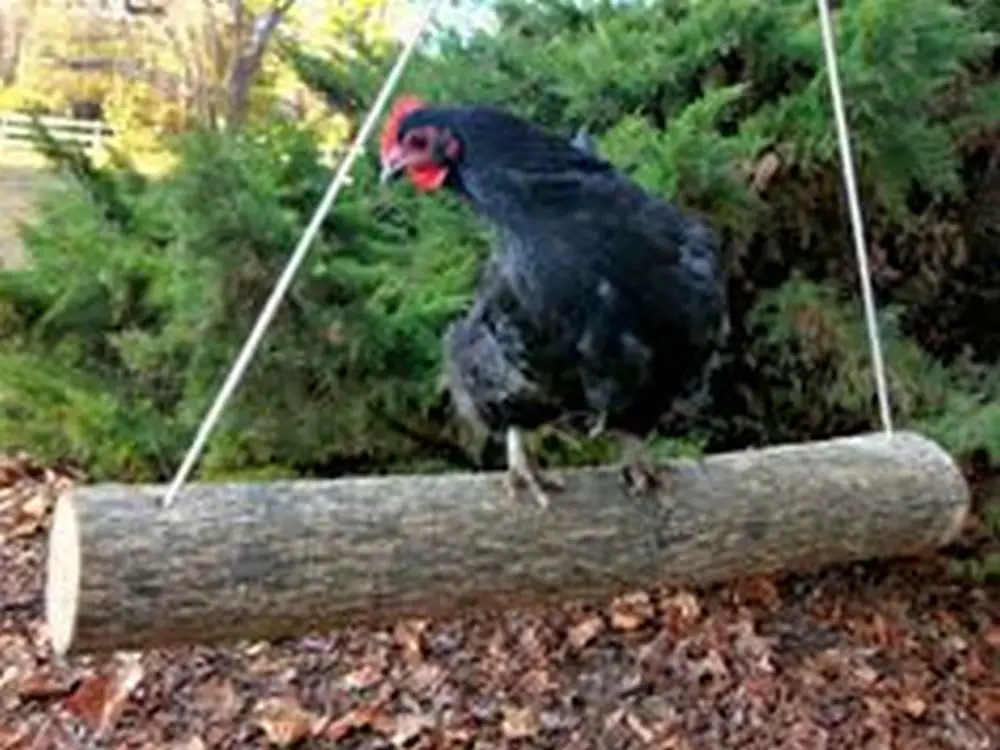
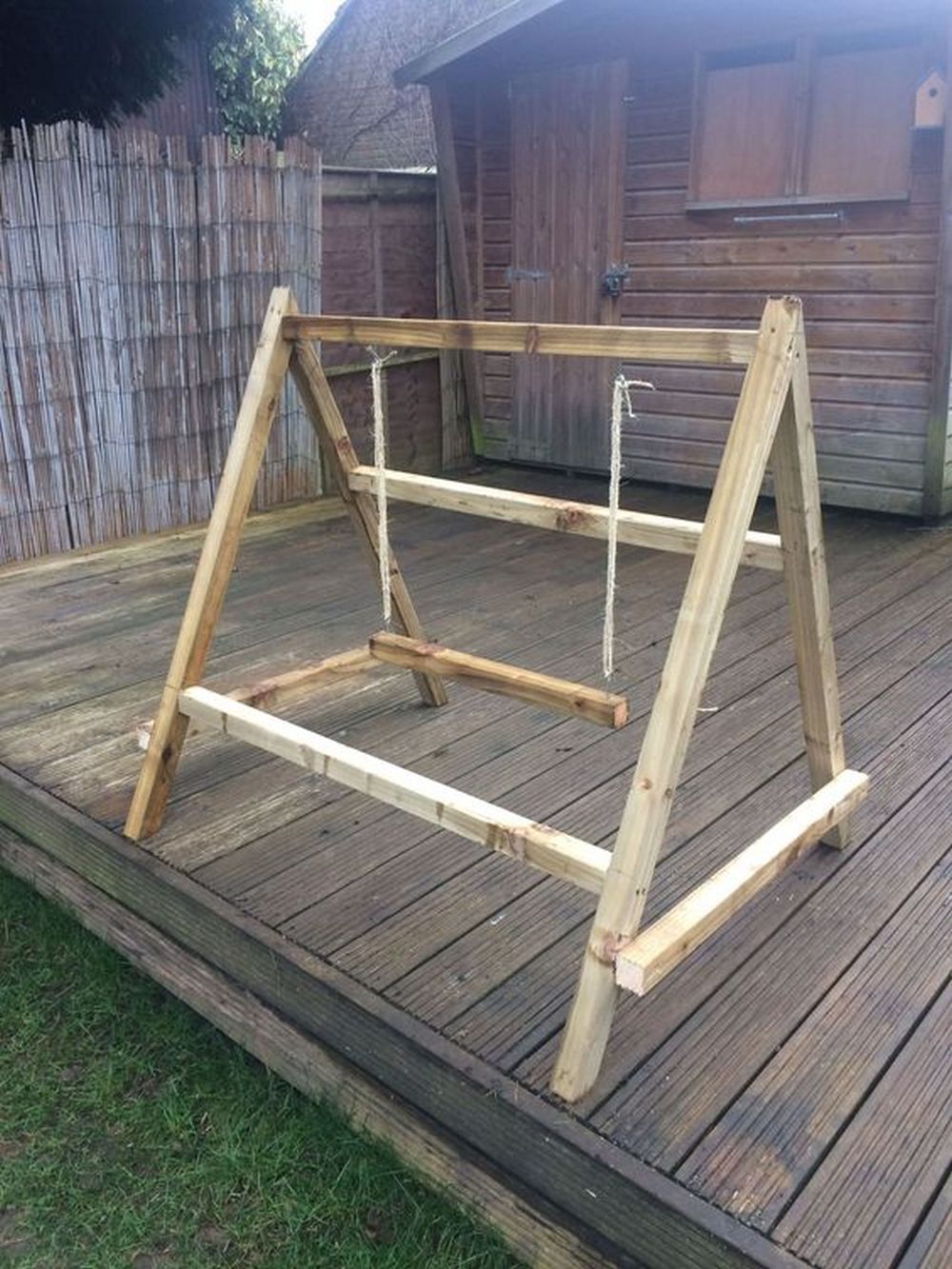
What Makes a Good Chicken Swing? Key Features to Look For
Not all chicken swings are created equal. While the idea is simple, the design and materials make a big difference in how safe, comfortable, and enjoyable the swing is for your chickens. A well-made chicken swing can keep your flock entertained, active, and happy. If you’re planning to make or buy one, here are the key features to look for.
Strong and Safe Materials
The materials you use should be sturdy and safe for your chickens. The perch should be made from solid wood that can handle the weight of one or two birds without bending or breaking. Avoid treated or painted wood, as chemicals can be harmful if your chickens peck at it. Natural, unfinished hardwoods like oak or maple are a great choice.
The rope should be thick and durable, at least 1/2 inch in diameter. Choose a material like natural fiber rope or strong synthetic rope that won’t fray easily. Frayed ropes can cause injuries or trap a chicken’s toes.
Proper Perch Size and Comfort
The perch needs to be wide enough for chickens to balance comfortably. A diameter of about 1.5 to 2 inches works for most adult chickens. The surface should be flat or slightly rounded to give them a secure grip. You can also add small grooves or a rough texture to prevent slipping.
Make sure the length of the perch allows enough space for your chickens. A 16 to 20-inch perch gives room for one or two chickens at a time. If you have a large flock, consider adding multiple swings to prevent squabbles.
Secure Attachment Points
How you attach the swing is just as important as the swing itself. The rope should be securely fastened through drilled holes in the perch, with strong knots to keep it in place. The swing should hang from a stable beam or hook that can support the weight and movement.
Check for even hanging. The swing needs to hang level so it doesn’t tip when a chicken hops on. Uneven swings can cause chickens to slip or avoid using them altogether.
Right Height and Free Movement
A chicken swing should hang low enough for chickens to hop onto easily. About 12 to 18 inches off the ground works well for most birds. If it’s too high, they may not use it. If it’s too low, it won’t swing freely.
Give the swing enough room to move without hitting walls or other objects. The area around the swing should be clear, so your chickens can enjoy it without risk of injury.
Weather-Resistant Design
If your chicken swing is outdoors or in an open run, choose weather-resistant materials. Untreated wood can be coated with natural oils like linseed oil to protect it from moisture. Use ropes that won’t weaken in the rain or harsh sun. Regularly inspect the swing for signs of wear and tear, especially after storms.
Easy to Clean and Maintain
A good chicken swing should be easy to wipe down or hose off when it gets dirty. Chickens can be messy, and perches can collect droppings. A smooth wooden surface is easier to clean than rough or untreated wood. Make it part of your regular coop cleaning routine.
Fun and Functional
Some chicken swings come with added features like textured grips, colorful beads, or bells. These extras can attract curious birds and encourage them to use the swing. Just make sure that any accessories are safe, non-toxic, and securely attached.
The right chicken swing combines comfort, safety, and durability. When you focus on these features, you create an inviting, fun space for your chickens to play and stay active. A good swing isn’t just a toy—it’s an easy way to support the health and happiness of your flock.
Conclusion
Crafting a chicken swing is a simple and rewarding project that keeps your flock entertained. It encourages healthy activity and reduces boredom-related issues. With just a few materials and basic tools, you can create a fun, safe swing your chickens will love.
We have more ways to keep you flock active. Check out our chicken playground ideas next!





